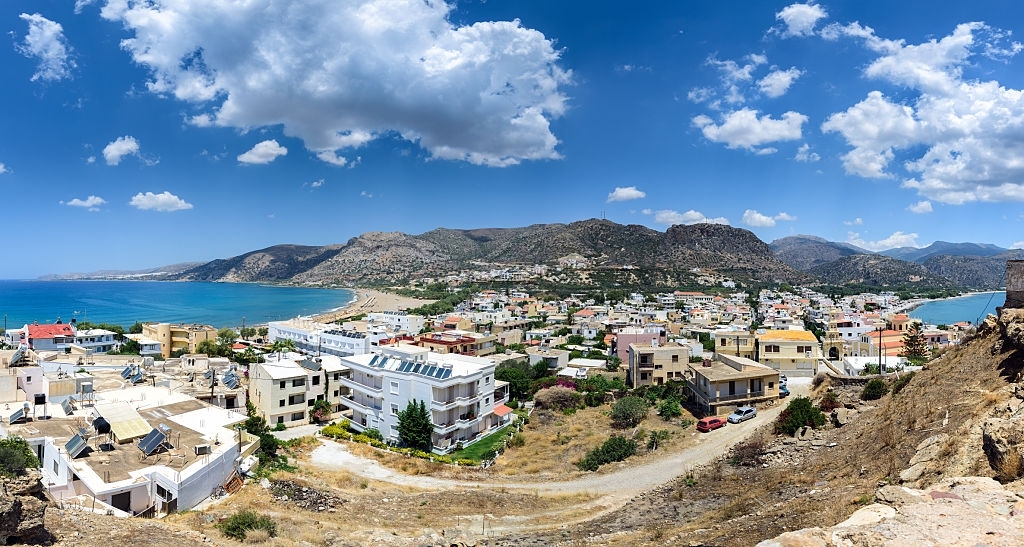
Modern Times
Table of Contents
After many unsuccessful attempts, the victorious uprising of the Cretans between 1896-1898 forced the Great Powers to pressure the Sultan to grant autonomy to Crete. This led to the creation of the semi-autonomous Cretan State with Prince George of Greece as High Commissioner and Chania as its capital.
Independence & Union
The authoritarian administration of the High Commissioner quickly created conflict with the free-spirited Cretans. Their revolutionary and restless nature ultimately led to the Therissos Revolution in 1905. The leader of the revolution, Eleftherios Venizelos, had previously taken part in uprisings against the Ottomans and at that time was Minister of Justice in the government of Prince George. The revolution did not last long, but the support for Venizelos became so great that Prince George resigned and the Great Powers withdrew their troops from the island. Elections followed in which Venizelos emerged as the undisputed leader of the Independent Cretan State. A little later he was summoned to Greece and became its prime minister in 1910. In total, he was elected 8 times and served between 1910 to 1920 and 1928 to 1933. Finally in 1913, with the help of Venizelos, the coveted union of Crete with Greece was finalized. The Treaty of London was signed and Sultan Mohammed II relinquished his rights to the island. In December of the same year, the Greek flag was raised at the fortress of Firkas in Chania in the presence of Eleftherios Venizelos and King Constantine and Crete became part of Greece.
Second World
The importance of freedom for the Cretans and their resistance to any external pressures became evident once more in 1940 during the Second World War. The Cretan Division took part, noting great successes, in the Albanian front against the Italians. After the occupation of mainland Greece by the Axis Powers, the next target of the German war machine was Crete island. Its occupation became a matter of strategic importance, in the war they were already waging in North Africa.
The battle of Crete
Left on the island of Crete, there are about 30,000 poorly equipped British soldiers and 12,000 newly recruited mainly Greek soldiers. Despite their small numbers, and in cooperation with the local population, the forces are able to resist the German soldiers that land on the island by air. The battle of Crete, lasted only ten days but was characterized by fierce battles and resulted in heavy losses on both sides. Eventually, with the capture of Maleme airport in Chania, the Germans gained a stable base on the island and on May 30, the “Battle of Crete” ended and the remaining Allied forces left the island for Egypt. The German occupation of the island lasted four years; a period which is stigmatized by the constant resistance of the local population to the German occupier. As is expected, the Germans responded brutally to intimidate and stifle any attempt at resistance. Hundreds of innocents, men, women and children are executed, while entire villages are literally destroyed. Representative are the cases of Kandanos and Koustogerakos in Western Crete and Arvi in central Crete. An extensive resistance network was also organized on the island by British agents landing from Egypt on its south coast. The German commander on the island, General Kreipe, was abducted by resistance forces, in 1944.
Modern History
In the 20th century, the island of Crete but mostly Heraklion, Rethymno and Chania, are characterized by the flourishing of the arts. Poets and novelists, philologists, historians, and archaeologists such as Ioannis Kondylakis, Nikos Kazantzakis, Ioannis Mourellos, Lefteris Alexiou, Galatia Kazantzaki, Elli Alexiou, Stefanos Xanthoudidis, Nexhinos Polanios, start to make their mark known. Another important milestone in the cultural development of Crete begins with the excavations of the early 20th century, which brought to light the unique monuments and glorious past of Crete. At the same time, we see the establishment of the only Archaeological Museum of Heraklion before the Second War and the Historical Museum of Crete. After 1960, archaeological museums are also established in Chania, Rethymno, Agios Nikolaos and Kissamos and small archaeological collections in Ierapetra, Archanes, Gazi and Neapolis. The revival of the 1960s transformed the island, which began to experience prosperity and large population growth, though unequally distributed. The rapid changes of the last 70 years mark the biggest that Crete has experienced in all its long history. The traditional ways of cultivating the land were abandoned and cattle, donkeys, mules and horses almost disappeared. The cultivation of cereals and legumes disappeared, the rural population decreased, cities and towns expanded, and tourism became the dominant profession.